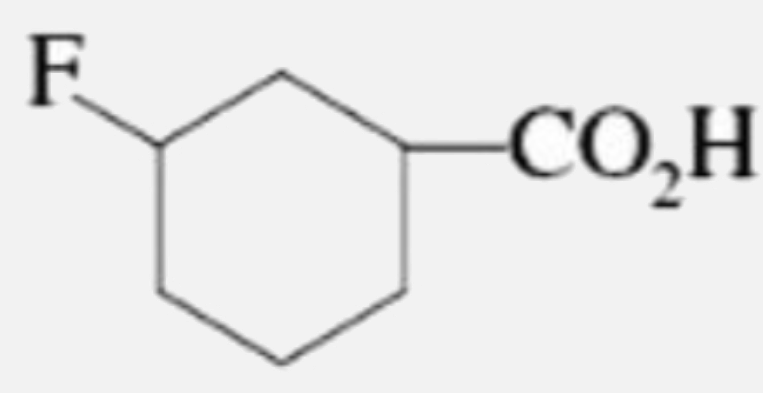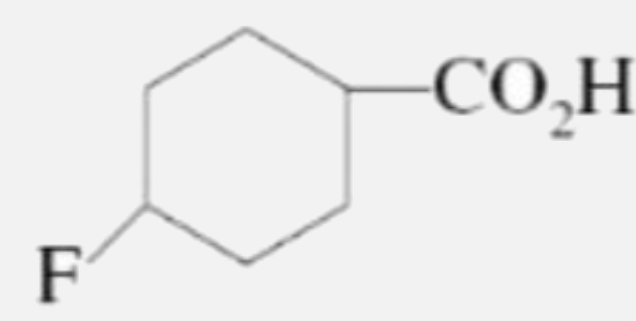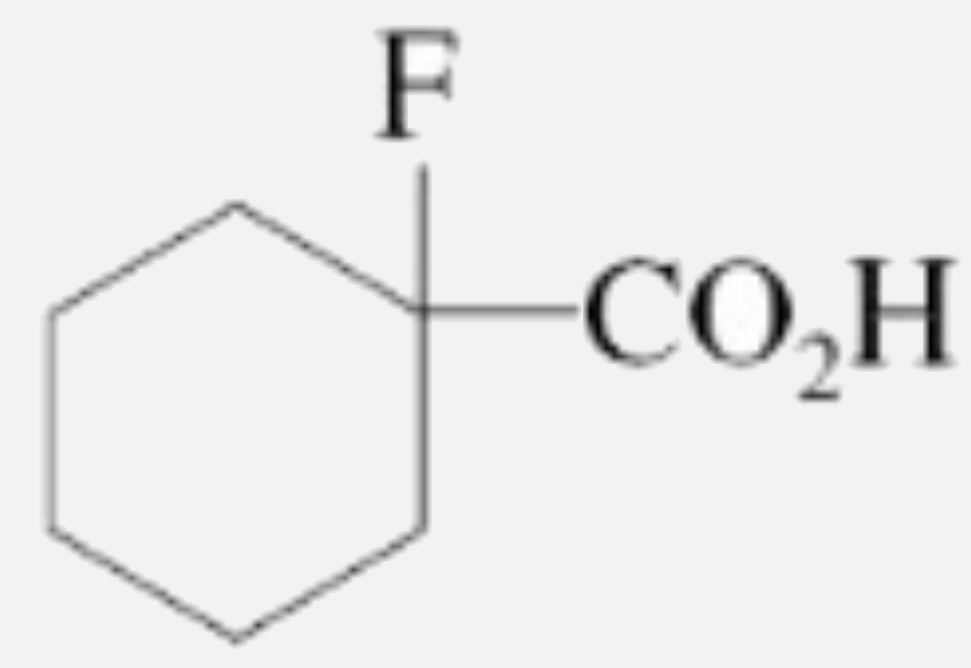Which of the following has highest Ka value?




The correct Answer is:D
To determine which of the given options has the highest Ka value, we need to analyze the structure of the acids provided and their ability to stabilize the conjugate base formed after dissociation. Here’s a step-by-step solution:
Step 1: Understanding Ka
The acid dissociation constant Ka is a measure of the strength of an acid in solution. It is defined as:
Ka=(H+)(A−)(HA)
Where:
- (H+) is the concentration of hydrogen ions,
- (A−) is the concentration of the conjugate base,
- (HA) is the concentration of the undissociated acid.
Step 2: Relationship Between Ka and Acid Strength
The strength of an acid is directly proportional to the stability of its conjugate base. A more stable conjugate base will result in a higher Ka value.
Step 3: Analyzing the Given Options
We need to analyze the effects of substituents on the stability of the conjugate base. The options involve a carboxylic acid with different substituents (like fluorine) at various positions (ortho, meta, para, and ipso).
1. Ortho Position: The fluorine atom is close to the carboxyl group and will exert an inductive effect, stabilizing the negative charge on the conjugate base.
2. Meta Position: The fluorine atom is further away from the carboxyl group, resulting in less stabilization of the negative charge.
3. Para Position: Similar to the meta position, the fluorine atom is not as effective in stabilizing the negative charge compared to the ortho position.
4. Ipso Position: The fluorine atom is directly attached to the carbon bearing the carboxyl group, providing maximum stabilization of the negative charge on the conjugate base.
Step 4: Conclusion
The stability of the conjugate base is highest when the electronegative fluorine atom is in the ipso position, as it can exert the strongest inductive effect on the carboxylate ion formed after dissociation. Therefore, the acid with the fluorine atom at the ipso position will have the highest Ka value.
Final Answer
The option with the highest Ka value is Option D.
---
The acid dissociation constant Ka is a measure of the strength of an acid in solution. It is defined as:
Ka=(H+)(A−)(HA)
Where:
- (H+) is the concentration of hydrogen ions,
- (A−) is the concentration of the conjugate base,
- (HA) is the concentration of the undissociated acid.
The strength of an acid is directly proportional to the stability of its conjugate base. A more stable conjugate base will result in a higher Ka value.
We need to analyze the effects of substituents on the stability of the conjugate base. The options involve a carboxylic acid with different substituents (like fluorine) at various positions (ortho, meta, para, and ipso).
2. Meta Position: The fluorine atom is further away from the carboxyl group, resulting in less stabilization of the negative charge.
The stability of the conjugate base is highest when the electronegative fluorine atom is in the ipso position, as it can exert the strongest inductive effect on the carboxylate ion formed after dissociation. Therefore, the acid with the fluorine atom at the ipso position will have the highest Ka value.
The option with the highest Ka value is Option D.
Similar Questions
Knowledge Check
Which of the following alkene has highest value of heat of hydrogenation?
A B
B C
C D
D
Which of the following has highest pKb value?
View SolutionWhich of the following has highest value of Ksp ?
View SolutionWhich of the following has the highest value of Kp?
View SolutionWhich of the following has the highest value of E∘red ?
View SolutionWhich of the following has the highest value of energy gap ?
View SolutionWhich of the following has the highest mass?
View SolutionWhich of the following has the highest heat of vaporization ?
View Solution